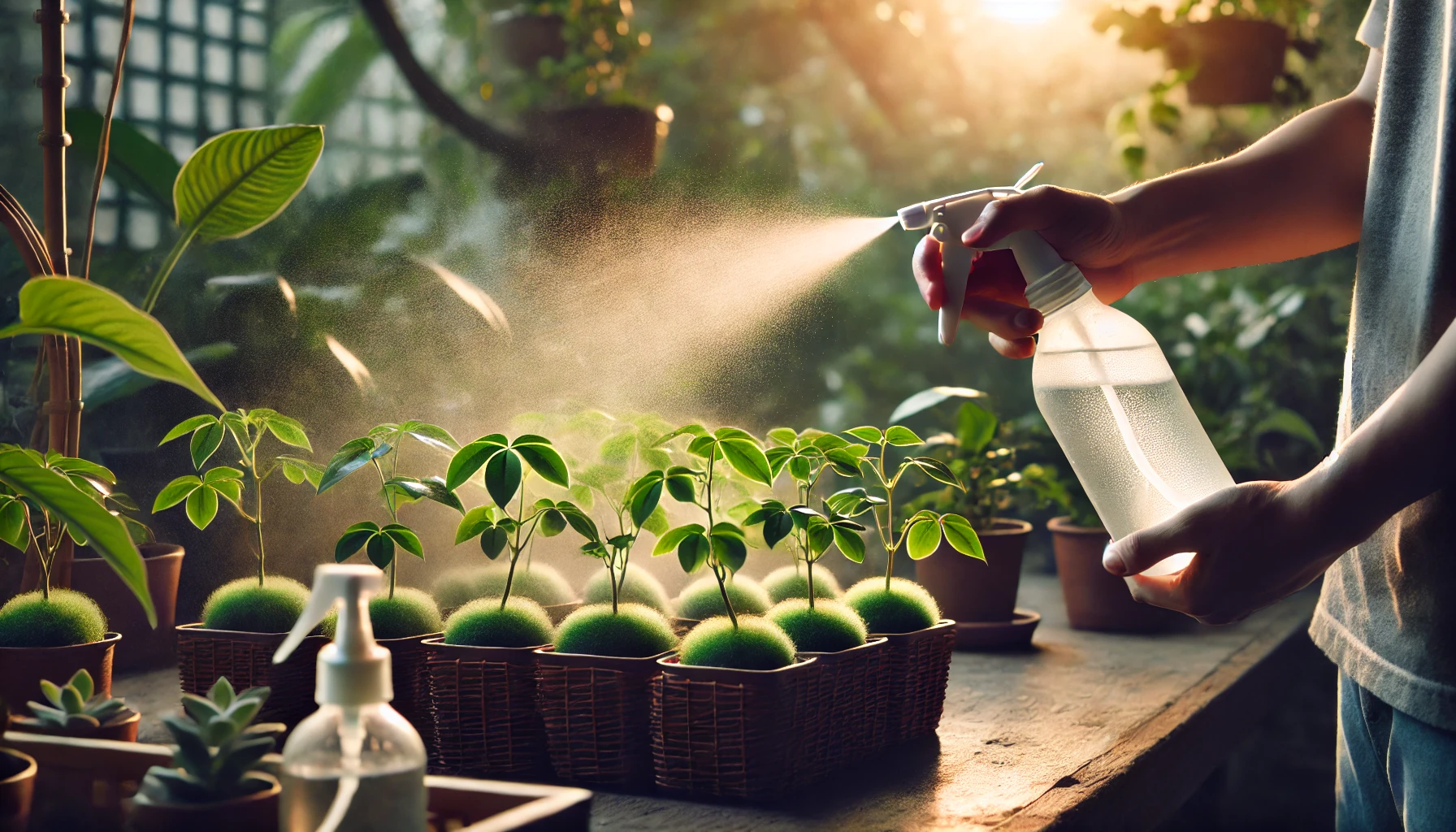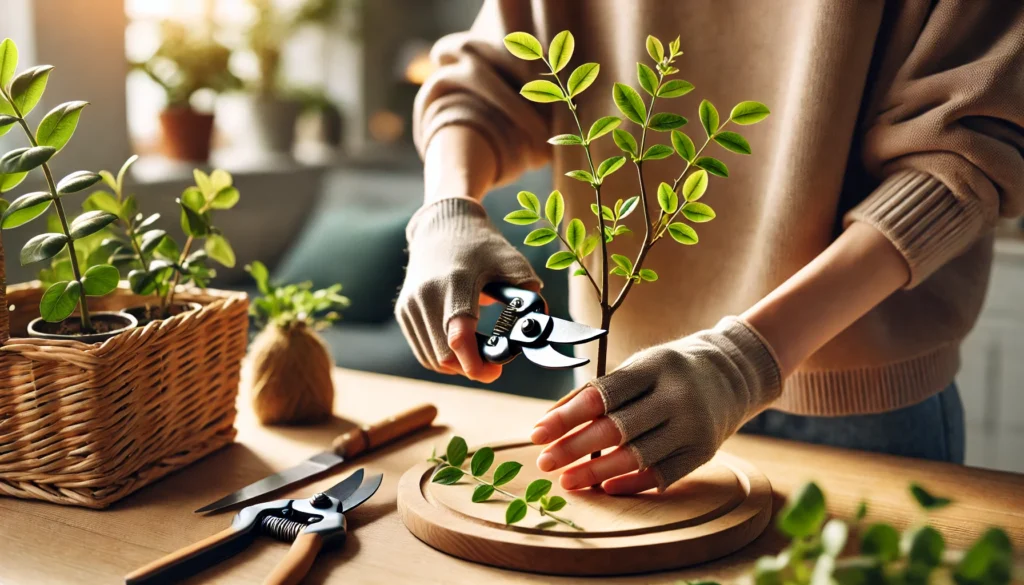
Stem Cutting Propagation Success Tips: How to Grow Plants from Cuttings
Propagating plants from cuttings is a rewarding and cost-effective way to expand your garden, but it’s not always as easy as it seems. Many gardeners struggle with getting their stem cuttings to root, but with the right approach, you can significantly increase your chances of success. In this article, we’ll share essential stem cutting propagation success tips that will help you grow healthy, thriving plants from cuttings. Whether you’re a beginner or a seasoned gardener, these simple yet effective tips will guide you through the process and ensure your propagation efforts are a success.
Table of Contents
ToggleUnderstanding Stem Cutting Propagation
Stem cutting propagation is one of the simplest and most effective ways to grow new plants. By taking a healthy stem from an existing plant, you can encourage it to form roots and become a fully established plant. This method is popular because it allows gardeners to reproduce plants that may not be readily available or to create multiple plants from a single parent.
What is Stem Cutting Propagation?
Stem cutting propagation involves taking a segment of a plant’s stem, removing it from the original plant, and placing it in a growth medium (like water or soil). Over time, the cutting develops roots, eventually growing into a mature plant. This technique is commonly used for plants like houseplants, shrubs, and some trees.
Why Use Stem Cutting Propagation?
This method has several advantages:
- Cost-effective: You can grow new plants without buying seeds or fully-grown plants.
- Faster results: Stem cuttings root quickly, meaning you’ll have new plants sooner than starting from seeds.
- Preserves traits: If you love a particular plant’s characteristics, stem cutting ensures the new plant will be genetically identical to the parent.
In the next sections, we’ll dive deeper into how to successfully propagate plants using stem cuttings, including tips on the best materials, tools, and techniques. Stay tuned!
Choosing the Right Stem for Cuttings Propagation
When it comes to propagating plants through stem cuttings, selecting the right stem is crucial to ensure successful growth. Here are some key tips to help you choose the best stem for propagation:
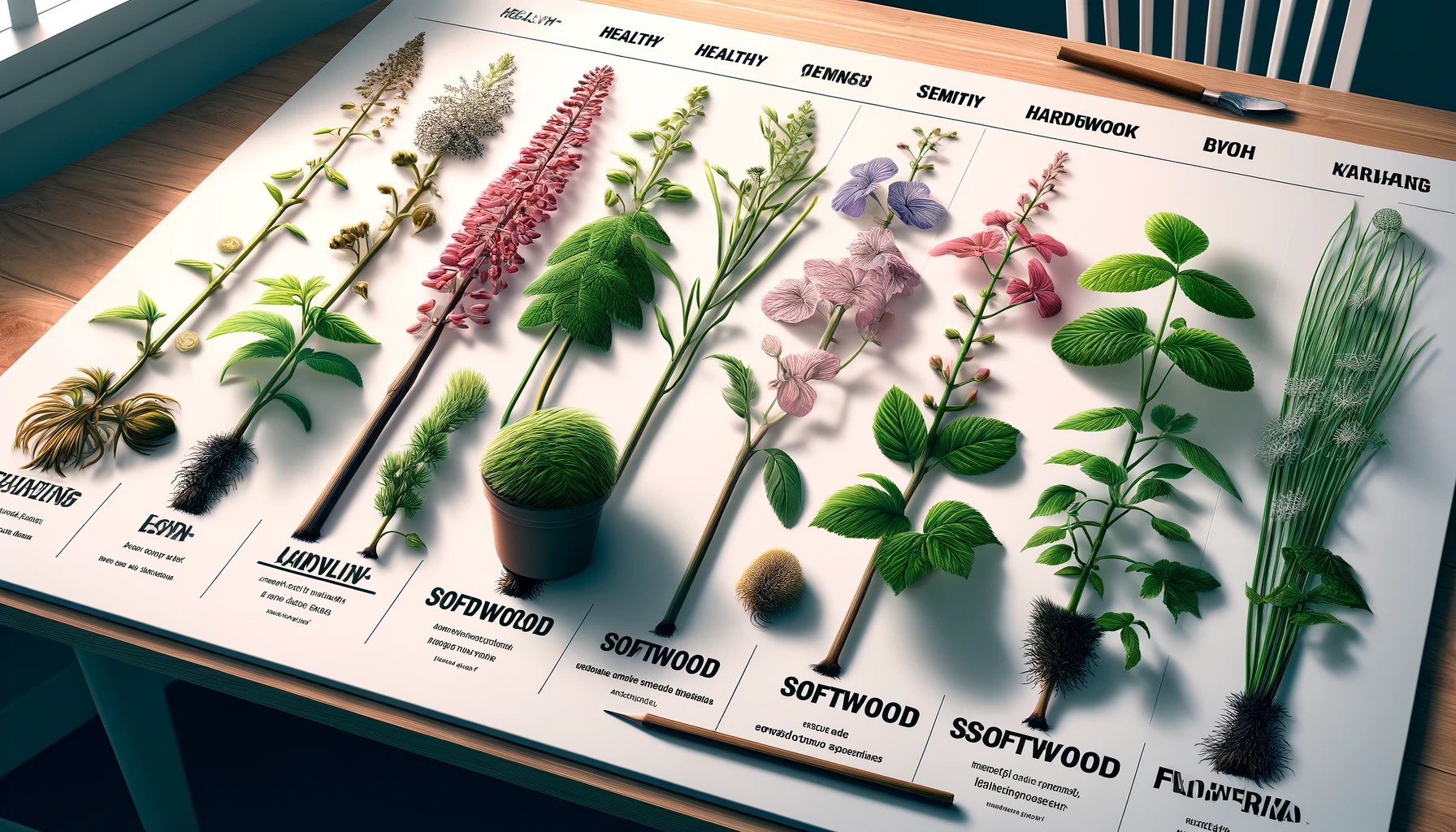
Select Healthy Stems
Choose stems that are strong, healthy, and free from disease or pests. Healthy stems will have vibrant green or slightly woody characteristics, depending on the plant type.
Look for Non-Flowering Stems
Avoid stems that are flowering or budding. The energy required for blooming can divert nutrients from root development, making it harder for the cutting to take root.
Choose Semi-Hardwood or Softwood Stems
For most plants, semi-hardwood stems (partially matured wood) or softwood stems (new, tender growth) are ideal for propagation. They strike a balance between flexibility and sturdiness, promoting root growth without being too weak.
Pick a 4-6 Inch Length
The ideal cutting length is between 4 to 6 inches, with at least two to three leaf nodes. These nodes are where roots will form, making them essential for successful propagation.
Avoid Overly Mature Stems
While mature, woody stems can sometimes work for cuttings, they tend to be less successful in root formation. Look for stems that are not too old or too young—aim for a middle-ground between fresh and mature.
By following these tips, you’ll increase your chances of successful propagation and enjoy thriving new plants in no time.
Preparing the Cutting for Propagation
When propagating plants through cuttings, the first crucial step is preparing the cutting properly. Here’s a clear guide to ensure you’re ready for successful propagation:
Select the Right Cutting
Choose a healthy, mature stem from the parent plant. Ideally, pick a cutting that’s about 4-6 inches long with several nodes. A node is where leaves, roots, or branches emerge, and it’s essential for rooting.

Make a Clean Cut
Use sharp, clean pruning shears to avoid damaging the plant and introducing pathogens. Cut just below a node at a 45-degree angle. This promotes better root growth and allows the cutting to take up more water.
Remove Excess Leaves
Trim away any leaves from the lower half of the cutting to prevent rotting when placed in soil or water. Leaving a few leaves on the upper portion will allow the cutting to photosynthesize and stay healthy.
Dip in Rooting Hormone (Optional)
For added success, dip the cut end of the stem in rooting hormone. This will stimulate faster root development, especially in species that are more challenging to propagate.
Prepare the Cutting for Planting
Place your prepared cutting into water or a pot with moist soil, depending on your propagation method. Ensure the node is submerged or buried in the soil to promote root growth.
By following these steps, your cutting will be in the best possible condition to develop healthy roots and grow into a new plant.
Choosing the Right Growing Medium
Selecting the right growing medium is crucial for the success of your plants, whether you’re growing them in pots or in the ground. A good growing medium provides proper drainage, aeration, and essential nutrients that support healthy root development. Here’s what to consider when choosing your growing medium:
Soil-Based Mix
For most plants, a high-quality soil-based mix works well. It provides a solid foundation for root growth and retains moisture. Look for mixes labeled as “all-purpose” or “potting soil.” These often contain peat moss, perlite, and compost, which promote healthy drainage and airflow.
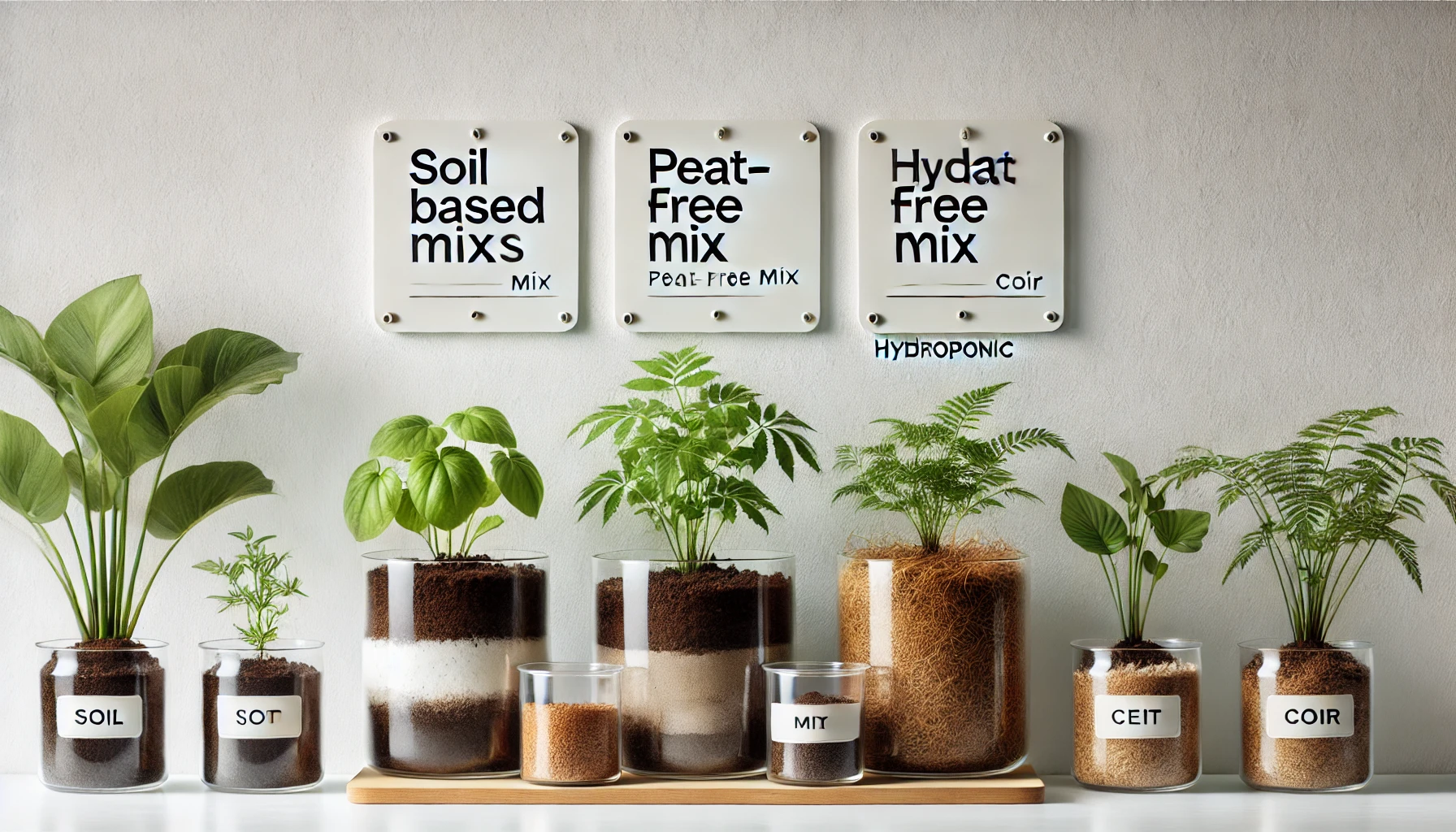
Peat-Free Mix
Peat is commonly used in many potting soils, but it’s not always the most sustainable option. Consider peat-free mixes, which may include coconut coir or bark. These are great alternatives that offer similar benefits without harming the environment.
Cactus and Succulent Mix
For plants like cacti and succulents, choose a mix with excellent drainage. These plants require well-drained soil to avoid root rot. A mix designed for cacti usually includes sand, perlite, and inorganic materials to ensure rapid water drainage.
Hydroponic Medium
If you’re growing plants without soil (hydroponically), you’ll need a medium like perlite, vermiculite, or coconut coir. These mediums allow water and nutrients to be absorbed efficiently by the roots, offering ideal conditions for growth without the mess of traditional soil.
Consider Plant Type
Different plants have different needs when it comes to growing mediums. For example, orchids thrive in a chunky mix that allows their roots to breathe, while leafy greens prefer a finer, more moisture-retentive medium. Always tailor the medium to the specific needs of your plants.
By understanding the needs of your plants and the characteristics of various growing mediums, you’ll create an ideal environment for healthy, thriving plants. Whether you’re growing flowers, vegetables, or houseplants, choosing the right medium ensures the best possible growth.
The Perfect Environment for Rooting
Creating the ideal environment is crucial when propagating plants through rooting. By ensuring the right conditions, you’ll increase your chances of success significantly. Here’s what you need to focus on:
Temperature
Roots thrive in warm conditions. Keep the rooting environment between 65°F to 75°F (18°C to 24°C). Too cold, and roots may fail to develop. Too hot, and your cuttings might dry out. A consistent temperature is key.
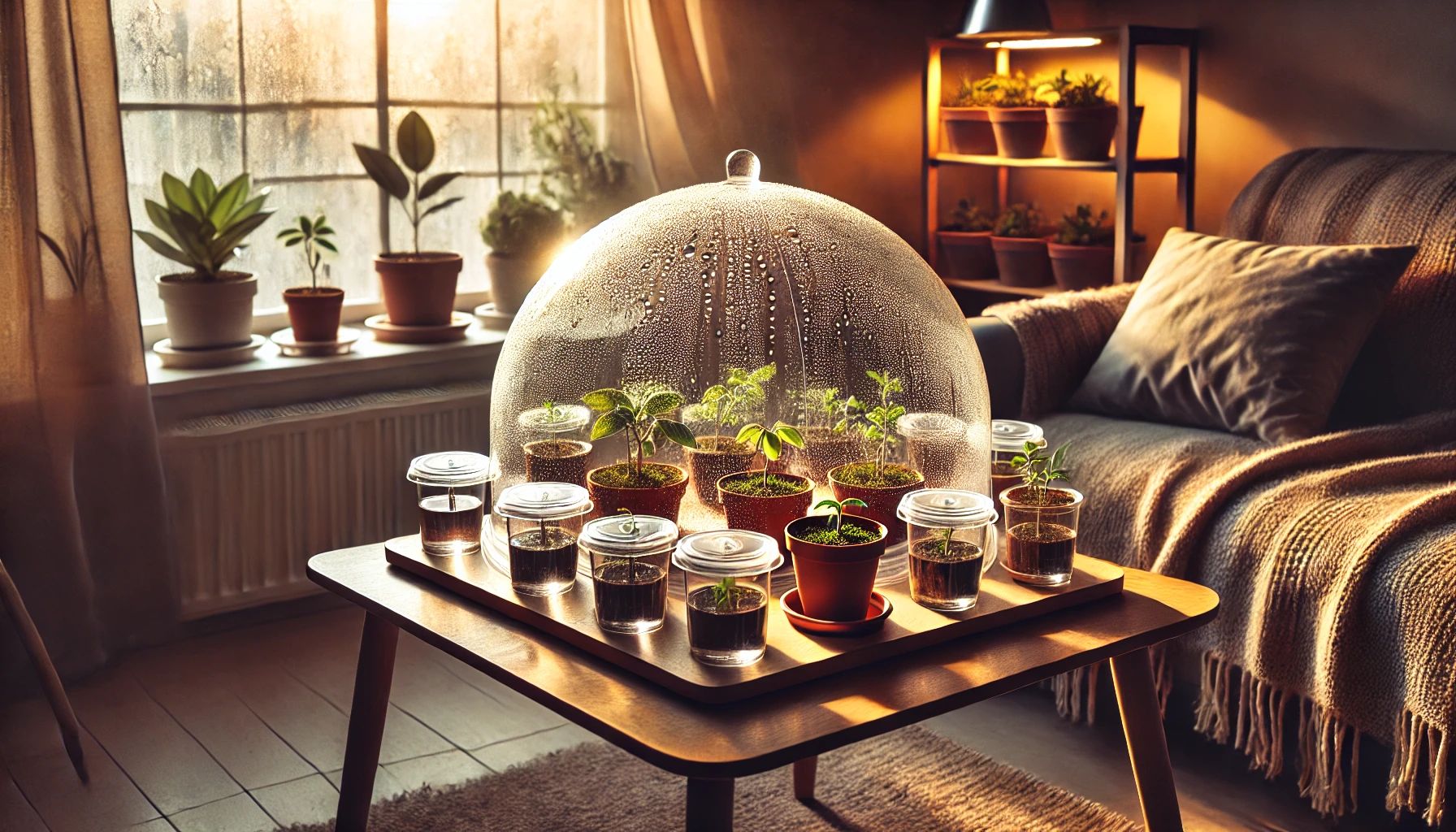
Humidity
Cuttings need moisture to form roots, so humidity is essential. Aim for around 70% to 90% humidity. You can maintain this by covering your cuttings with a plastic bag or dome. Ensure the covering doesn’t touch the cuttings to prevent mold growth.
Light
While cuttings need some light, direct sunlight can be too harsh. Place them in bright, indirect light. Too much sunlight can cause stress, while too little can slow down the rooting process.
Soil or Medium
Use a well-draining medium like a potting mix, perlite, or vermiculite. These will prevent waterlogging while still offering the moisture cuttings need. Avoid heavy garden soil, as it can suffocate the roots and cause rot.
Air Circulation
Good airflow is important to prevent mold and mildew. Ensure your rooting area is well-ventilated but not too breezy, as strong winds can dry out your cuttings.
By replicating these conditions, you create an environment that mimics the natural rooting process, making it easier for your plant to establish healthy roots.
Watering and Maintaining the Cuttings
Successfully watering and maintaining your plant cuttings is crucial for promoting healthy growth and ensuring their survival. Here’s how to manage both effectively:
Watering Your Cuttings
- Consistent Moisture: Keep the soil evenly moist but not soggy. Overwatering can lead to root rot, while underwatering can stunt root development.
- Watering Frequency: Water when the top inch of soil feels dry to the touch. This typically means watering every 2-3 days, depending on environmental factors like humidity and temperature.
- Proper Drainage: Ensure the container has drainage holes to allow excess water to escape. Standing water can drown the roots and cause fungal problems.
Humidity and Temperature
- Maintain High Humidity: Cuttings thrive in a humid environment, especially during the rooting phase. Mist the cuttings lightly every day or place them under a humidity dome or clear plastic bag to lock in moisture.
- Temperature: Keep the cuttings in a warm location, ideally between 65°F to 75°F (18°C to 24°C), to encourage root growth. Avoid placing them in direct sunlight, as this can dry them out too quickly.
Monitoring for Growth
- Check for Root Development: After a few weeks, gently tug on the cutting to see if it has established roots. If you feel resistance, it’s ready to be transplanted into a larger pot or directly into the ground.
- Avoid Overwatering: Once roots are established, reduce watering frequency to prevent overwatering. Cuttings need less water as they mature, but never let the soil dry out completely.
By carefully monitoring watering, humidity, and temperature, you’ll give your cuttings the best chance to root and grow into healthy plants.
Patience and Timing
When growing plants, patience is one of the most important virtues you’ll need. Whether you’re starting from seed or nurturing a young plant, timing plays a crucial role in its success. Understanding when to plant, prune, or harvest will directly impact the health and growth of your plants.
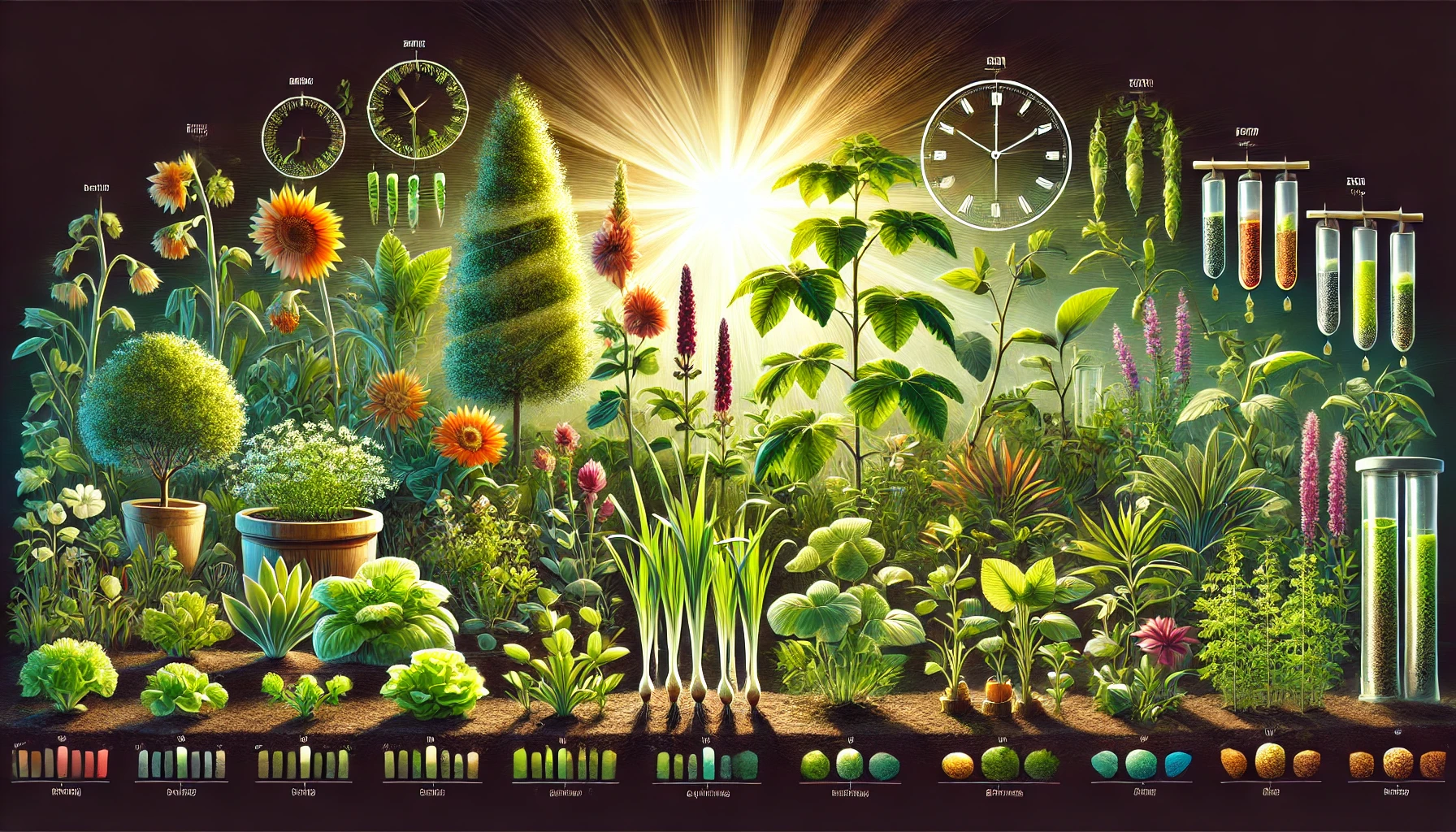
Planting at the Right Time
Timing your planting schedule is key to healthy growth. Most plants thrive during specific seasons, and planting at the wrong time can lead to poor growth or failure. For example, warm-season plants like tomatoes should be planted after the last frost date, while cool-season crops such as peas should be planted early in spring. Make sure to check the optimal planting time for each plant type in your region.
Give Plants Time to Establish
Once planted, give your plants time to settle and establish roots. Rushing this process can lead to weak plants that struggle to thrive. New plants need time to adjust to their environment and grow a strong root system. This period can vary, but generally, it takes several weeks to a few months.
Harvesting at the Right Time
Harvesting too early or too late can affect the taste, texture, and yield of your crops. For example, harvesting fruits or vegetables too soon may result in underdeveloped flavors. Be patient and wait for the signs of ripeness, such as color changes, size, or firmness, before harvesting.
Be Prepared for Growth Cycles
Different plants have different growth cycles. Some plants may need a longer period to mature, while others grow quickly. By understanding the growth cycle, you’ll know when to expect flowers, fruits, or other milestones. Pay attention to your plants and adjust your care routine to match their natural timing.
Long-Term Commitment
Some plants, like trees or perennials, take years to reach their full potential. While annuals may provide quicker gratification, other plants require a long-term commitment. Keep in mind that with patience, your efforts will eventually result in a thriving, beautiful garden or harvest.
Successfully propagating plants from stem cuttings can be an incredibly rewarding experience, allowing you to expand your garden without breaking the bank. By following the stem cutting propagation success tips shared in this article, you can dramatically increase your chances of growing healthy new plants. Remember, patience is key, and every step—from selecting the right stem to providing the perfect environment—plays a crucial role in the success of your cuttings.
Don’t be afraid to experiment with different plants and techniques to find what works best for you. With practice, you’ll soon master the art of stem cutting propagation and enjoy the satisfaction of watching your garden grow and flourish. Happy propagating!
Frequently Asked Questions(FAQ)
What are the most common mistakes in plant propagation?
The most common mistakes include choosing the wrong propagation method, using unhealthy or incorrect cuttings, overwatering or underwatering, and failing to maintain the proper environment for rooting.
How can I avoid choosing the wrong propagation method?
To avoid this mistake, always research the best method for each plant species. Some plants propagate better from cuttings, while others are best grown from seeds or divided. Understanding your plant’s needs ensures better results.
Why is it important to use healthy cuttings?
Using unhealthy cuttings can lead to poor rooting or even the spread of disease. Always choose fresh, disease-free stems to ensure a higher chance of success in propagation.
How do I prevent overwatering or underwatering my cuttings?
Overwatering can lead to root rot, while underwatering can cause the cuttings to dry out. Use a well-draining medium and water the cuttings when the soil feels dry to the touch. Keep the environment moist but not soggy.
What environmental conditions are necessary for successful propagation?
Most cuttings require a warm environment (65-75°F or 18-24°C), with high humidity and indirect light. A propagation dome or plastic bag can help maintain humidity and protect the cuttings.
Can I propagate any plant using cuttings?
Not all plants are suitable for propagation through cuttings. Some plants, like many succulents and woody plants, are better propagated by other methods, such as division or layering. Research your specific plant’s needs.
How long does it take for plant cuttings to root?
The time it takes for cuttings to root can vary depending on the plant species, environmental conditions, and propagation method. Generally, it can take anywhere from a few weeks to a couple of months for cuttings to develop roots.
What should I do if my cuttings aren’t rooting?
If your cuttings aren’t rooting, ensure you’re using the correct method, maintaining proper moisture and humidity, and providing the right temperature. You can also try using rooting hormone to encourage faster root development.

